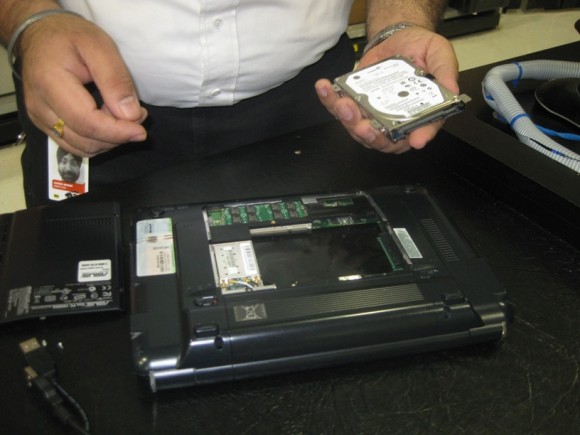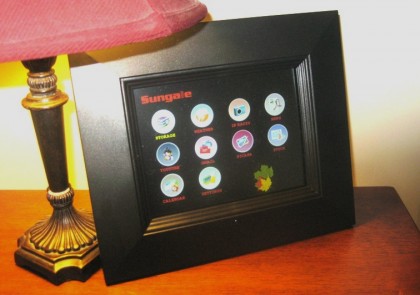
There are so many lessons to take away from my recent experience in netbook hardware failure, it’s hard to know where to begin. A resounding vote for cloud computing and distributed risk? How about, beware of irony and over-praising your gadgets? Or simply when it rains (first the washing machine breaks down, then the car…), it pours. No, here’s the moral of the story I like: when your computer dies on a weekend, it’s good to know the Geek Squad is around for data recovery.
My beloved Asus Eee 1000HA has served me well for eleven months, but last Friday everything changed when a system config error popped up my screen. I couldn’t even boot in safe mode, and every attempt to break away from the error screen resulted in a cycle that landed me right back where I started. Miraculously I had the Windows XP recovery CD and an external CD/DVD drive on hand, but even after I figured out how to re-order the boot sequence, it became clear to me I would lose all of my data if I ran the recovery disk. A call to Asus tech support also confirmed that an F9 reset would wipe my files, and that I would need to get a full back-up before attempting the process. (Tech support would not provide any advice on how I might accomplish such a back-up with no working operating system.)
At this point you may be wondering whether I have ever considered backing up my data on a regular basis to avoid this type of disaster. I have backed up in the past to one of our Western Digital external hard drives, but even with the help of the Clickfree back-up solution I picked up in January at CES (it runs a differential back-up every time you plug it in), I’ve never managed to get into a regular routine. Before last week, it had been several months since I’d run a back-up, and I was panicked at the thought of losing the many files existing solely on my Eee PC.
